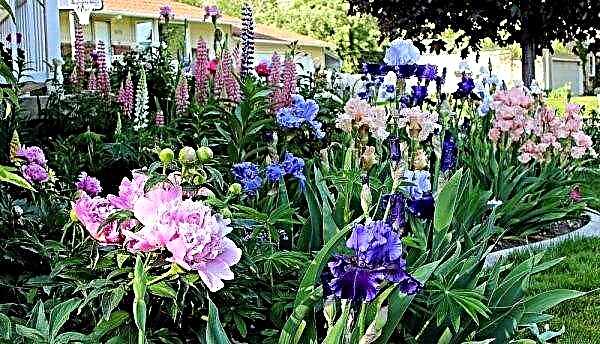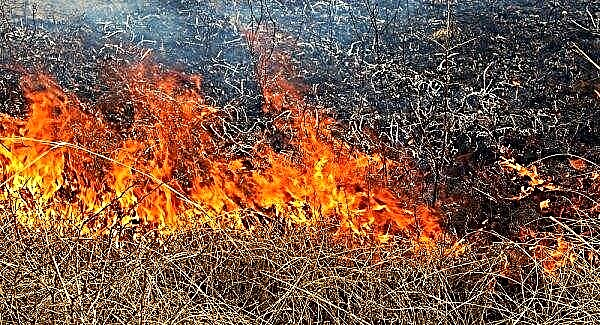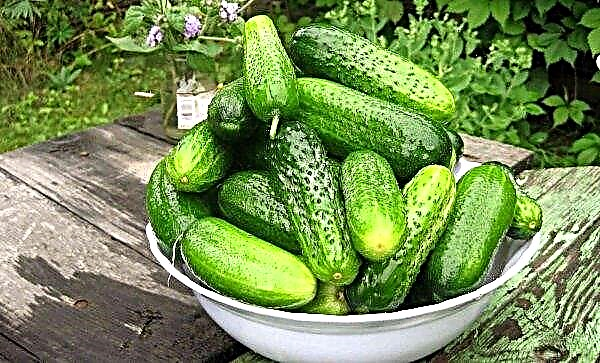An artificial reservoir is able to decorate the territory of any area and landscape. To create it is not necessary to have a flat terrain. You will learn about how to make a pond with your own hands on a site that is located on a slope from this article.
Slope Pond Requirements
The basic rules for constructing a pond remain unchanged, regardless of what territory it is being built on: hilly or perfectly flat.
Important! If the pond is placed too close to the house, then if the waterproofing is damaged, it can flood the basement or foundation.
Therefore, water bodies located on a slope have the following requirements:
- attractive appearance that matches the design of the landscape;
- protection from direct sunlight during the midday heat for at least six hours;
- Illumination in the morning or evening hours;
- good visibility from the side of the house;
- the absence in the immediate vicinity of trees with a powerful root system that can destroy the waterproofing of a reservoir;
- wind protection;
- compliance with an inclination angle of not more than 30 °, which will make it possible to avoid displacement of the soil and falling asleep pit ground;
- location away from trees and shrubs so that falling leaves do not pollute the water;
- compliance with the requirements for depth depending on the purpose (for wintering fish, you will need at least 2.5 m, and for ordinary ornamental reservoir - 45 cm)
- installation of waterproofing at the bottom of the pit so that water does not leave;
- the location of the coast on the same level;
- flat bottom for the reservoir with rigid waterproofing.

How to make a decorative pond on a slope with your own hands
The process of building a reservoir on the site consists of the following stages:
- Design.
- Fortification.
- Providing drainage.
- Design.
- Excavation.
- Filling with water.
Did you know? Near San Francisco (USA) you can see colorful ponds: pale green, red, pink, coral, yellow, brown. This color occurs due to cyanobacteria living on the surface.
Pond layout
The beginning of work on the creation of a pond with your own hands in the country is its design, which covers:
- drawing;
- process order;
- calculation of materials;
- costing.
An important point in drawing up the drawing is the size of the pond, at which it is desirable to observe proportions relative to the rest of the plot. For example, it is recommended that the reservoir area for an area of 10 acres be about 4 m². A depth of 50 cm is sufficient for this size. In small areas, you can equip a lake by making it from a barrel or a children's bath.
It should be noted that large reservoirs have such advantages compared to small ones:
- temperature changes at different times of the day are less reflected in water temperature;
- the level of oxygen and acidity is more stable;
- clean less frequently.
The choice of materials should be based on their quality and durability. As for the species, hard materials are suitable for a pond of the correct form, and flexible materials are suitable for a fancy one.
Most often, lakes are made from:
- concrete;
- plastic;
- films made of PVC, butyl rubber or polyethylene.
The flow rate of the latter is calculated by the sum of the width, length, double depth of the pond and an additional 60 cm for allowances.
Slope reinforcement
So that the crumbling soil does not pollute the pond, the inclined shore is strengthened in such ways:
- Piles - can be made of metal, reinforced concrete, wood, plastic. A laborious method that requires the use of special equipment. Suitable for a large reservoir located on a steep coast.

- Gabions - special boxes from which they build a wall so that the earth does not slip. This method requires a large area and special equipment. He is a last resort.

- Erosion protection mesh (coconut mat). It is buried in the ground, where it is entwined with the roots of plants and strengthens the shore.
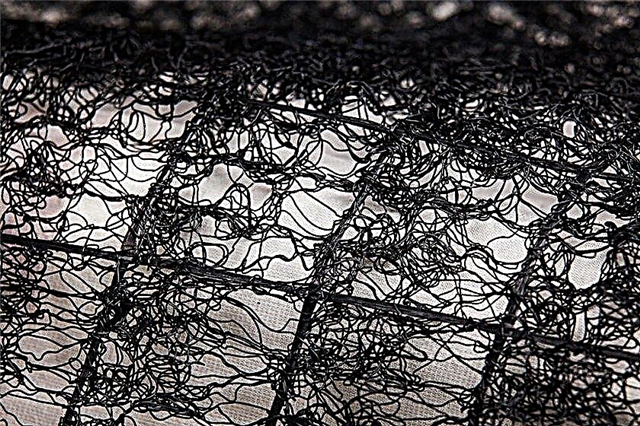
- Reinforcing mesh - it is installed between the pond and the slope, after which it is filled with stones.
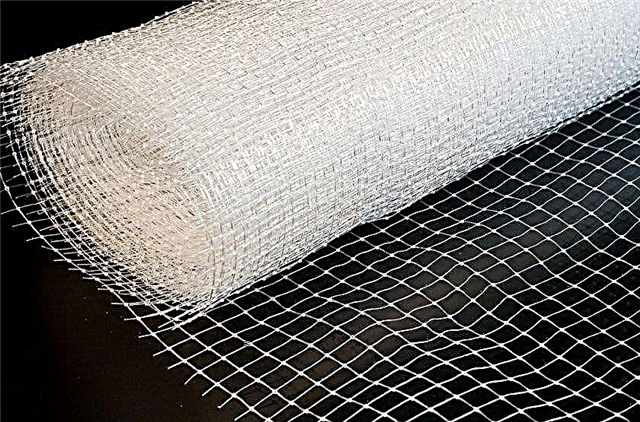
- Geogrid with cellsin which plants are planted or small stones are laid out. Inexpensive and effective way, suitable for small areas.

- Stones - they make decor for the coastline.
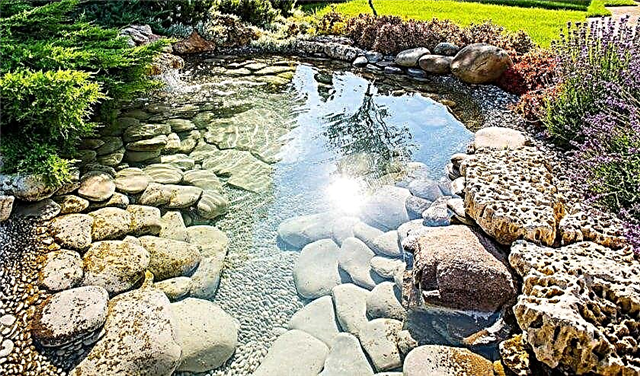
- PVC sheet piles - piles with connecting locks.
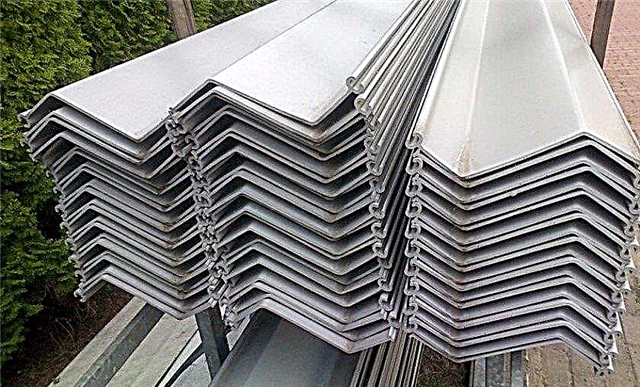
- Vegetation with a well-developed root system.

Installation of a drainage system
If groundwater lies close to the surface, they can moisten the soil and reduce its strength. In this case, artificial drainage is required. It is also necessary to control the water level in the lake so that after prolonged rains the area does not swamp. To drain the water, the bottom of the pit is made with a slope in the direction in which the flow will occur. In the deepest place they lay a wide pipe, one of its ends is closed.
When the pond is located in the upper part of the slope, then below, at a distance of 1 m from it, they dig a hole with a volume of 1 m³, into which gravel, stones, pieces of brick or rubble are poured. Between it and the pond lay a pipe or a small trench, the bottom of which is covered with a film and also fall asleep. The pond located at the bottom of the slope can be used to drain the soil by laying a pipe to it or digging a trench, which can later be decorated under a dry stream.
Pond Design Selection
The design of the pond should be in harmony with the surrounding elements. It can be curved or regular in shape - there are no requirements for the aspect ratio in this case. However, keep in mind that small ponds with elaborate twisty patterns look better in small gardens.
In many ways, the design will depend on the goal pursued:
- If you want to equip an ordinary reservoir in a natural style, then fish and decoration elements are not needed, but you need to pay attention to the swamp and coastal zone.
- For a decorative pond, it is important to provide for the presence of plants and special types of fish that emphasize the originality of the style.
- If you set out to raise fish, forget about swamp and coastal plants. Use stones as a decor, from which you can also lay out a small fountain.
 In areas that are inclined, water bodies located at different levels and connected by waterfalls or streams look good. The island looks good in the center of the pond, especially if a small bridge leads to it. For fountain equipment or lighting, electricity will be required.
In areas that are inclined, water bodies located at different levels and connected by waterfalls or streams look good. The island looks good in the center of the pond, especially if a small bridge leads to it. For fountain equipment or lighting, electricity will be required.
Important! If you want to visually increase the size of the reservoir, make a narrow border around the perimeter.
Laying a pond and filling it with water
If the bottom of the reservoir is planned from plastic, then the laying process involves the following steps:
- The contours of the trench are outlined, increasing the length and width of the plastic mold by 10 cm.
- Dig a hole 5 cm deeper than desired.
- Check the bottom with a level.
- Set the shape, fix with sticks.
- They launch water to a third of the height.
- Small stones or moistened sand are poured into the hole between the mold and the ground.
- Decorate the edges, fastening the elements with lime and controlling the horizontal level.

In the case when a film is used for waterproofing, they do this:
- Outlines of the pit are outlined.
- They dig a hole so that in the center there is the greatest depth (a bayonet of a shovel is enough around the perimeter).
- Sand is poured at the bottom, lined with non-woven or geotextile, and a film is stretched over them with free tension.
- They crush it with stones at the bottom and along the coastline.
- Fill with water, controlling that the film does not slip.
- After 2-3 days, fill its edges, hide them under stones, decorate the shore.
Water is supplied using a hose from a well or a tap. If it comes from a nearby stream, you can lay a supply pipe with a diameter of about 25 cm. Creating a pond is possible, even if the place is on a slope.
Did you know? One of the largest artificial reservoirs is located in the center of Russia - in Udmurtia. Izhevsk Pond was created 300 years ago and has an area of 24 km².
To do this, you need a plan, the availability of free time and financial resources for the purchase of materials. In order for a reservoir to become a decoration of a site, it must fit in well with the environment and have an attractive coastal design.











